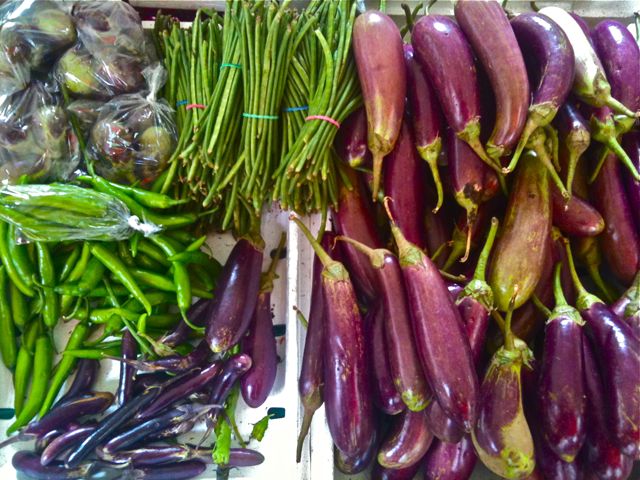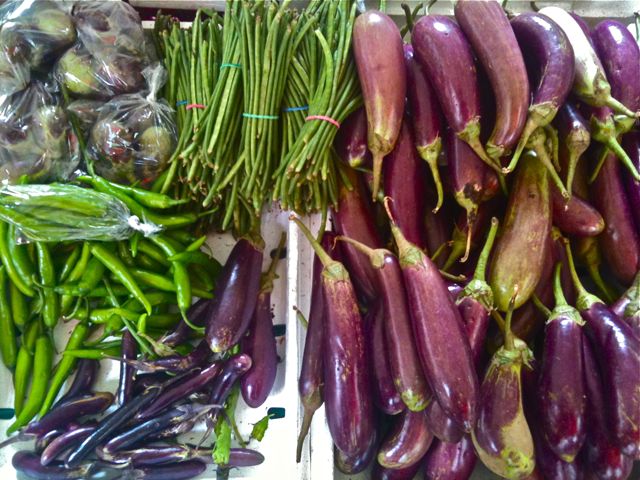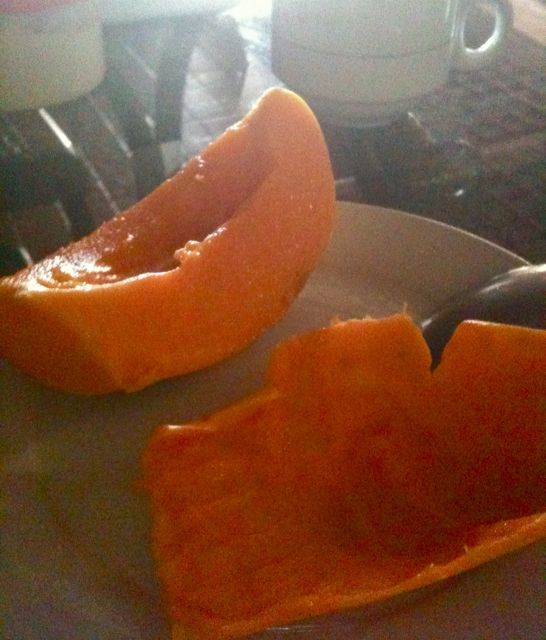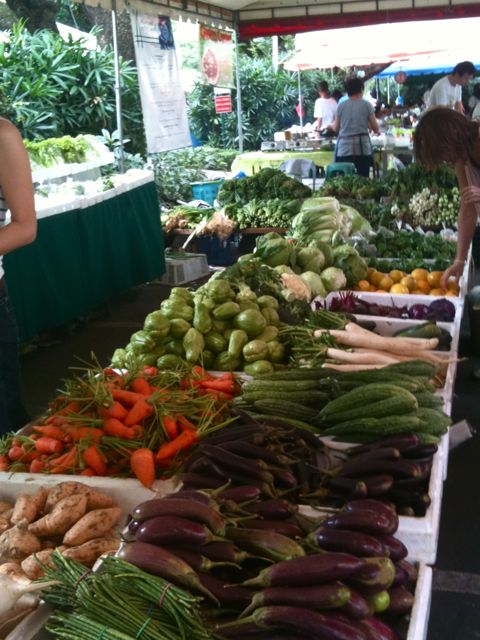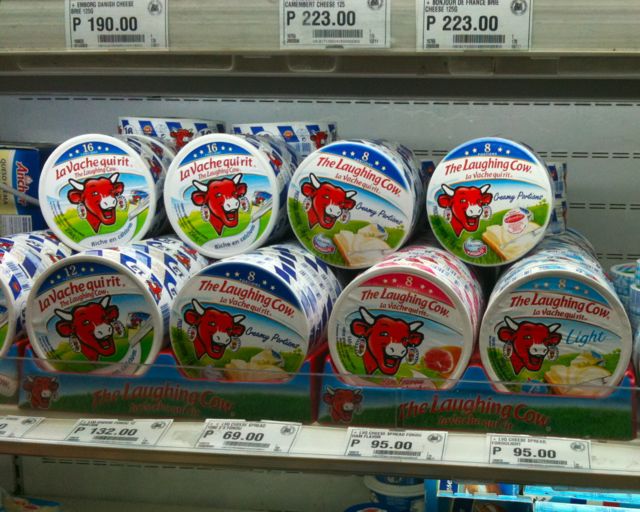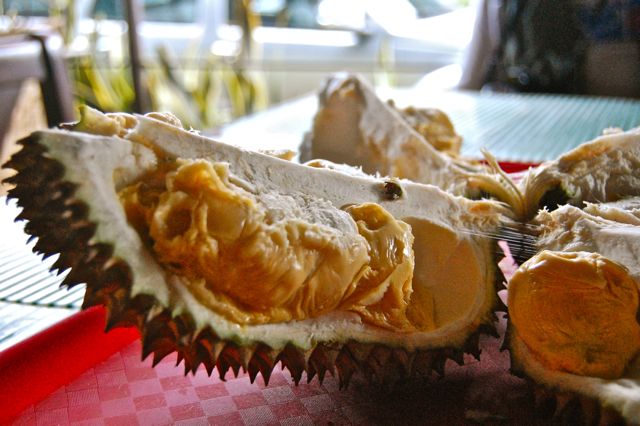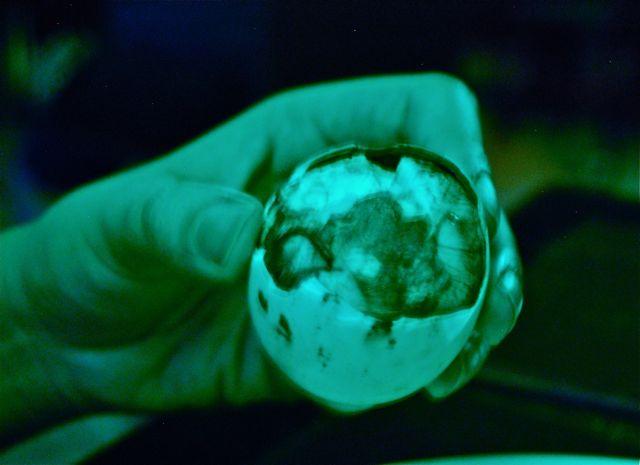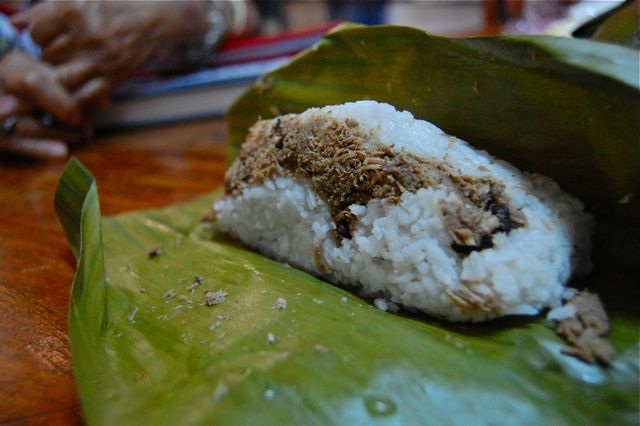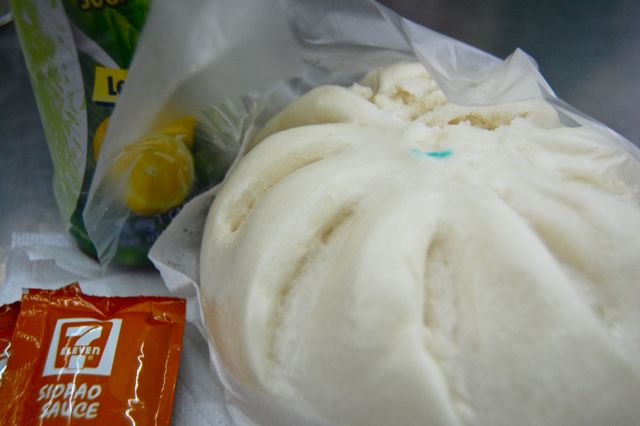After going on about the dishes I thought were the very best food I had on the trip, I think it’s time to talk about vegetables.
All the purple vegetables above are eggplants, some smaller in size than zucchini. I never found out why they are harvested earlier than the ones consumed in the west; maybe it’s a way to control the bitterness of the seeds?
In general, my impression is that many vegetables and fruits are much smaller than their counterparts in the west. Not just the eggplants – the peppers, the chillies, the squash. Take the papaya above for an example; it was a bit longer than my hands (I admittedly have large hands, but they’re not superhuman). I was given an entire fruit as part of my breakfast. In Mexico, an entire fruit contains about seven portions as big as the one I had.
As you can see in the picture below, freshness is very much appreciated; the carrots haven’t even had their stalks removed. Greens are kept perfectly crisp.
Apart from scrambled eggs I made twice with these delicious small peppers, I didn’t really have a chance to cook while in the Philippines. A shame, I think, because this country not only has a tremendous agricultural variety, but also plenty of other ingredients to satisfy all kinds of tastes. It may be rare to find vegan dining options in the country, but vegans who cook for themselves have it easier in the Philippines than in most anywhere else. Soy-derived products are sold basically everywhere, and the cuisine relies on many different vegetable seasonings.
Low-carb? Supermarkets devote a fair chunk of their space to the fishmonger, where you can find species that not even the fancy markets where I live sell. European expat in need of Vache qui rit?
I think France is the only place I’ve seen that beats the La Vache qui rit and co. selection in a random supermarket in Metro Manila.
But nobody goes to the Philippines to look for superprocessed cheese, right? Not when durian has made it into adventurous eating shows worldwide. I’ll spare you the long story: I didn’t think it stank as bad as I expected it to; I didn’t think it tasted as good as I expected it to; the quality of the texture was a good surprise.
This durian was rather pricy, too, as it was off season (even though the difference between winter and summer in the Philippines is less than 10ºC)… But I would say trying this fruit must be the number 1 priority for other food-obsessed people out there, or simply for those with an interest in nutrition. It will make the apples you eat seem even more boring than they already do.
Another note: if you know what balut is, and are for some reason wondering if I tried it… Yes, I did. With true conscience of what it was. (If you don’t know what it is, I’d recommend you don’t look it up). And here is the evidence:
Even though I was exposed to a lot of human misery during those days (misery that makes ethical issues like this look pale in comparison, in my very humble opinion), I have to admit that it was psychologically tough to take the first bite. Verdict: it’s like eating the yolk in a hard-boiled egg.
On the topic of Pinoy snacks I tried, I should point out that I got to try many of the rice-based goodies. The one above was shared with me during our first meeting with the inspiring PRC Youth of Cotabato and Bai Fatima. The brown stuff is dried meat, I think, quite salted.
Aaaand, believe it or not, the mass-produced piece of joy pictured above is rice-based, too. I introduce you to my emergency breakfast of day 2 in the Philippines, the Seven Eleven siopao. The white shell is glutinous, made of rice, and is stuffed with spicy barbecued pork. I don’t know how much it is Chinese or Pinoy as it is Not Good for Your Life Expectancy, but I must admit it was much better tasting than any emergency food I may have had in Seven Eleven before.
More on rice snacks in part III.
